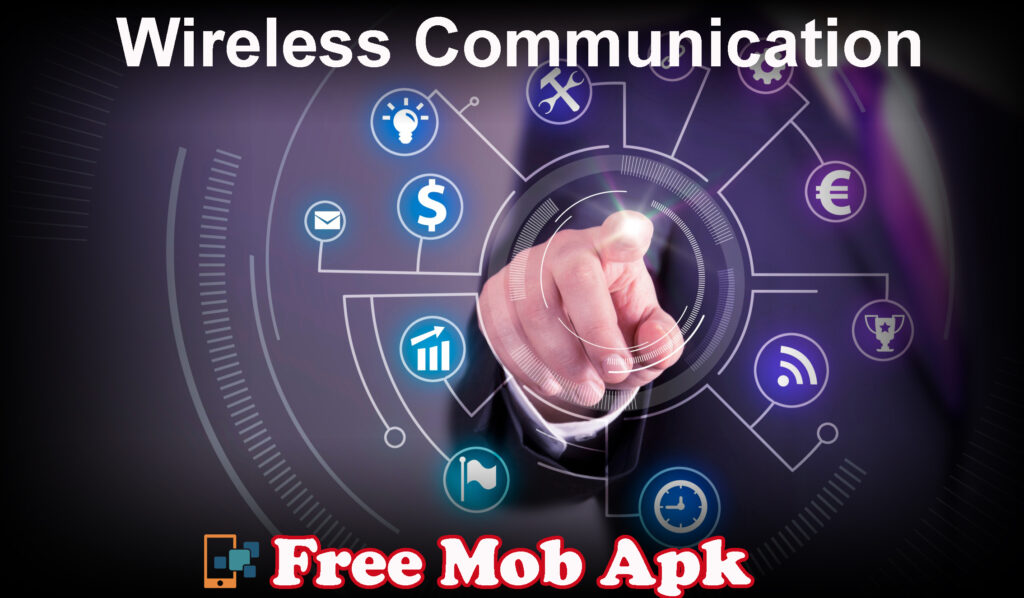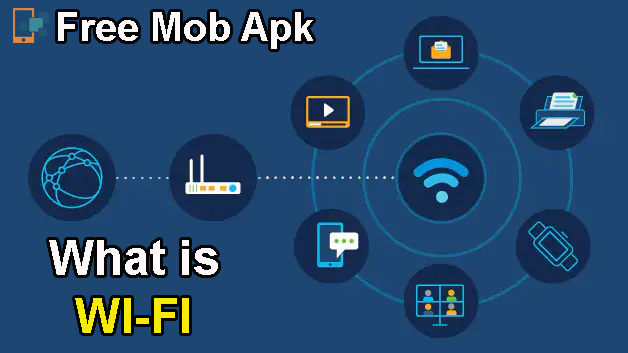In the most basic sense, wireless technology refers to communication transmitted without wires or cables. However, the term covers a wide range of technologies and mediums, from cellular networks to Bluetooth devices to local Wi-Fi networks. Wireless is a broad term that rings all sorts of technologies and devices that transmit data over the air rather than over wires, including cellular communications, networking between computers with wireless adapters, and wireless computer components.
Wireless technology is rapidly becoming integral to most people’s daily lives. People rely on wireless technology for information, entertainment, and communication, whether at work, at home, outdoors, or in the car. It’s hard to imagine how wireless technology came to fruition before it became a key institution across industries and places.
Even though wireless has become nearly a given in everything we do now, its significance has not diminished from its early days. Wireless tech may be more important now than ever. It does everything from providing speed, flexibility, and network performance to transferring information and increasing productivity. Wireless has become more and more dependent over time.
Keep reading to get a better idea of why wireless technology is important.
History of Wireless Technology
The origins of wireless technology are related to the discovery of electromagnetic waves by Heinrich Hertz (1857-1894).
Guglielmo Marconi created the wireless telegraph, the first commercial radio frequency communication device (1874-1937).
It was created over 50 years after the development of industrial wired telegraph systems by Samuel F.B. Morse in 1832.
In 1990, A mobile receiver on a ship received a radio signal from Marconi. He was the first who carry out such an action.
The Importance of Wireless Technology
Wireless technology is becoming increasingly important as more people adopt more flexible lifestyles, including working from home. Tech-savvy employees can instantly share information, allowing productivity levels to stay up, regardless of whether workers are in the same office. They only need an internet connection.
However, the ability for employees to work remotely is only one of the many benefits of wireless connectivity. However, there is also a cost factor. According to AMS Technologies, wireless networks are generally less expensive to install and maintain than other networking options. Data transfer is faster over a wireless network that can access anywhere, anytime.
There are also security issues. Medical professionals working in remote areas can connect wirelessly to other medical centers without issues. In addition, wireless technology makes it possible to respond more quickly in an emergency.
An Example of Wireless Devices
Here are some common examples of wireless devices:
Ultrared and infrared remote control equipment.
Professional Specialized Radio (SMR) and Land Mobile Radio (LMR).
Radio Amateur Service (Ham Radio)
Marine VHF radios for both comsumers and professionals
Cordless telephones: They have a limited operating range. They are different from cellular phones.
Air traffic control and aviators use radio navigation and air band gadgets.
Global Positioning System (GPS): It allows the drivers of motorcycles, trucks, cars, captains of boats and ships, and airplane pilots to locate their position from anywhere in the world.
Pagers and Cellular Telephones: It provides both business and personal connectivity mobile and portable applications.
Satellite TV that uses direct-broadcasts satellites in geostationary orbit. Typical services use direct satellites to deliver certain television channels to viewers.
Wireless computer components: Wireless mouse, wireless keyboards, and wireless headphones are printers that use wireless technologies such as Bluetooth or wireless USB.
What is Wireless Communication?

Wireless communication is one of the most important and growing technology areas in the telecommunications industry. It is the process of transferring information wirelessly between two points without using wires, physical medium, or cables.
Wireless communication systems transfer information from the transmitter to the receiver. It is also known as wireless transmission. They are separated by a distance. Wireless communication systems allow the transmitters and receivers can be located meters to kilometers apart.
In this developing country, high-speed wireless technology has become a part of our lives. Wireless communication devices include GPS receivers, Bluetooth devices, mobile phones, Wi-Fi, and Remote controls.
Type of Wireless Communication
There are three types of wireless communications: Wireless Wide Area Network (WWAN), Wireless Local Area Network (WLAN), and Wireless Personal Area Network (WPAN).
WWAN is design to use mobile phone signals. These are usually maintain and protect by the cellular service providers. This allows you to stay connected even when no other network access method is available.
WLAN is a wireless network in wireless technology that uses radio waves. The core network is usually wired, and few access points connect wired users to the wired network. Its reach can be anywhere from a single room to an entire building.
WPAN is a short-range network that uses Bluetooth technology. These are used to connect the appropriate devices near the main location. Its range is around 30 feet.
Types of Wireless Technology
The different types of wireless technologies include satellite, IR, broadcast, Bluetooth, microwave, ZigBee, etc.
1. Satellite communication
Satellite communications are widespread worldwide, allowing users to stay connected almost anywhere in the universe. When the signal is sent near the satellite, the satellite amplifies the signal and retransmits it to an antenna receiver on Earth’s surface. For satellite communications, it consists of several important components: first, the space segment, and second the ground segment. The ground segment includes fixed or mobile transmission and reception, while the space segment primarily includes satellites.
2. Infrared Communication
Infrared wireless technology uses infrared radiation to transmit information within a device or system. That radiation is electromagnetic energy with a longer wavelength than red light (longer wavelength). It is used for TV remote controls, security control, near-field communications, and more. In the electromagnetic spectrum, infrared (IR) lies between microwaves and visible light. So at the end of the day, you can use it as a source of communication.
Photo LED transmitters and photodiode receptors are essential for successful infrared communication. Thus, information is transferred between source and destination in this way. Sources and targets include TVs, cell phones, security systems, computers, and laptops.
3. Radio Broadcasting
Radio is the first widely used wireless technology was open wireless communication, and it still serves a purpose in recent years. A simple multi-channel radio allows users to communicate over short distances, and private bands provide communication services to mariners.
4. WiFi

Wi-Fi is a form of wireless communication use in various electronic devices such as smartphones, laptops, and iPads. In this particular system, the router acts as a wireless hub. In the network, users can only connect very close to the router. Wi-Fi is the most common network application that provides portability for wireless networks. For security reasons, your network should password protect. Otherwise, it will be accessible to others.
5. Microwave Communication in Wireless Technology
Microwave wireless communication is an effective means of communication using radio waves. The wavelength of radio waves is measure in centimeters (cm). In this communication, information can be transmitted in two ways. One is the ground mode, and the other is satellite mode.
Satellite systems can send data from satellites more than 22,300 miles from Earth. Satellite signals are send and received by the earth stations. The frequency range is 11 GHz to 14 GHz, and the transmission speed is 1 Mbps to 10 Mbps. The main disadvantage of microwave signals is that they can affect by bad weather, especially when it rains.
6. Bluetooth Technology
Bluetooth Technology is a wireless technology to exchange and transmit information between mobile devices and other devices. Hands-free earbuds, a mouse, and a wireless keyboard are all connected to cell phones.
Types of Wireless Network in Cellular Communication
When we’re talking about cellular wireless technology, we are most commonly referring to a scenario where a device like a mobile phone/smartphone or a SIM card enabled tabled, or a laptop computer connects to a cellular tower to facilitate internet access on the go. Cellular communications typically use radio waves to transmit information and voices to a specific frequency.
3G
The third generation of wireless mobile communications is reffer to as 3G. It usually appears on mobile phones/smartphones and SIM card-enabled tablets.
4G
The 4G is a loose term for 4th generation cellular telecommunication technologies, which is about 10 times faster than 3G.
LTE
LTE is an abbreviation of Long-Term Evolution and is also called 4G LTE, but it is a 3G technology development, not 4G. In most daily scenarios with no coverage issue, 4G and LTE operate at the same speed, confusing the distinction between 4G and LTE for most users.
5G
5G technology is the fifth-generation mobile networking standard, providing greater bandwidth (speed) improvements than previous versions of mobile networks.
Advantages of Wireless Technology
- Any data and information can transfer quickly at maximum speed.
- For these networks, installation and maintenance are less expensive.
- Wireless internet connectivity is available everywhere.
- This is especially useful for employees and doctors working in remote areas as they can be in touch with health centers.
Disadvantages of Wireless Technology
- An unauthorized can easily pick up wireless signals floating in the air.
- It is important to protect the wireless network so that unauthorized users do not misuse their data.
Final Verdict
The development of wireless technology has made it possible to manufacture a variety of internet-connected gadgets. In addition, wireless technology has also made it possible for devices to communicate with each other without the need for wires.
How to Download MP3 Music Online
Wireless technology will continue to be popular and used in the coming years. By 2022, it is estimated that more than 7 billion wireless devices will be used worldwide. Increasing use of wireless technology is expect to lead to more efficient and effective communication and increased productivity and convenience.

